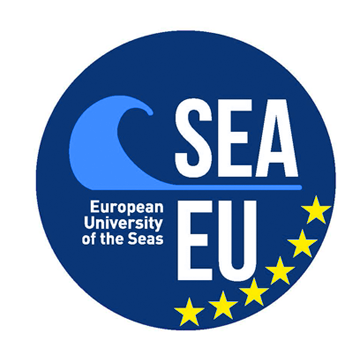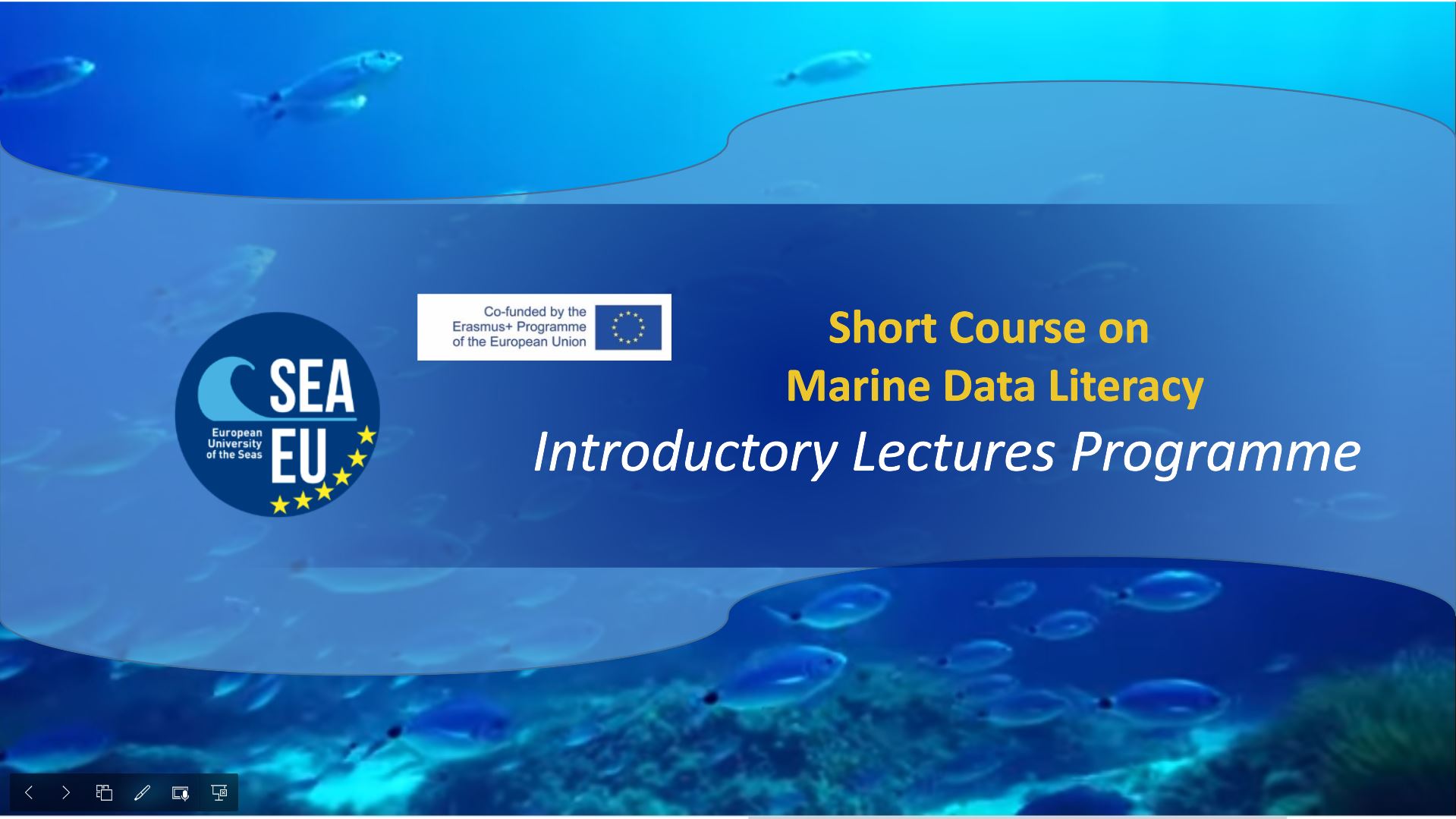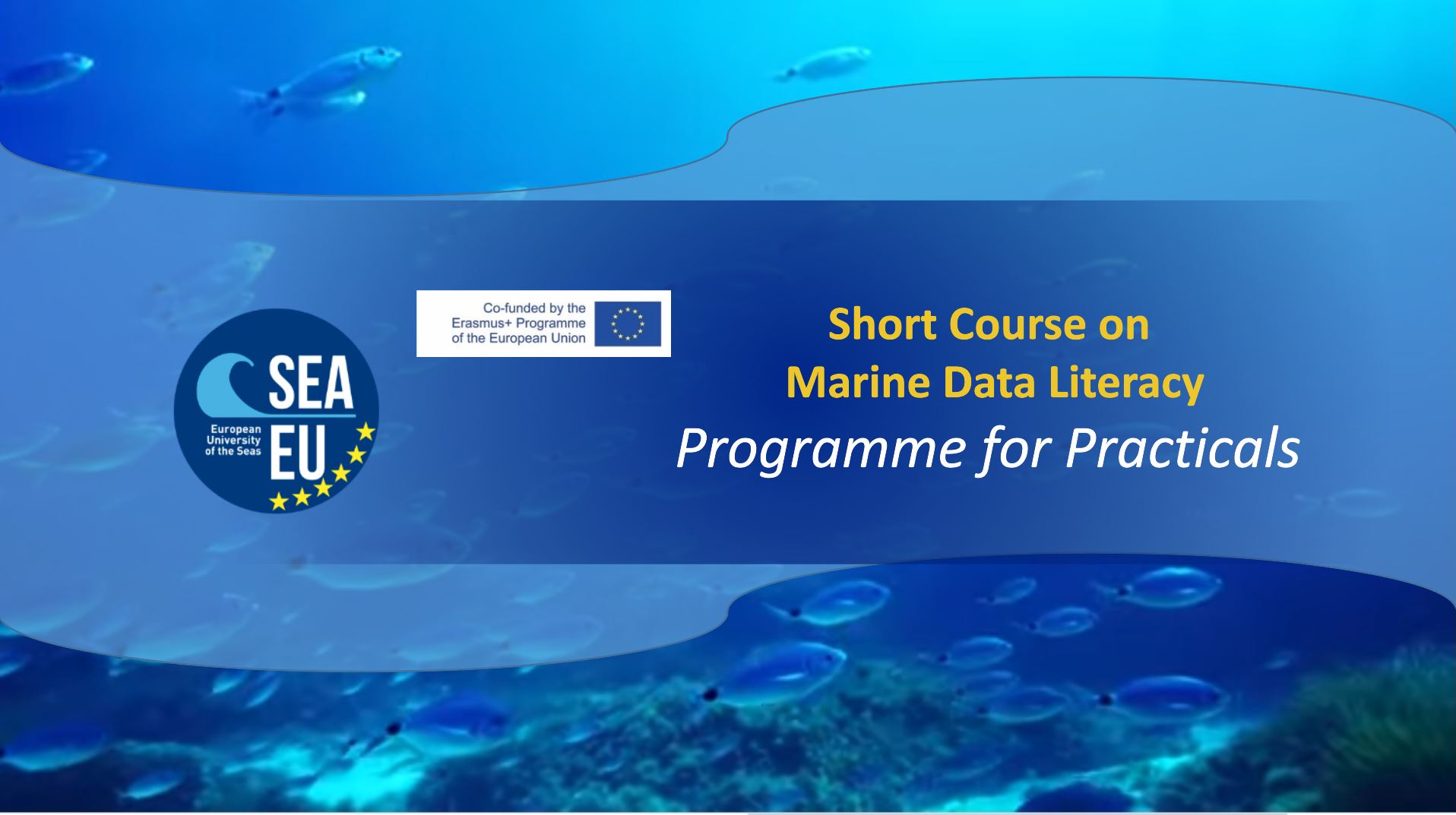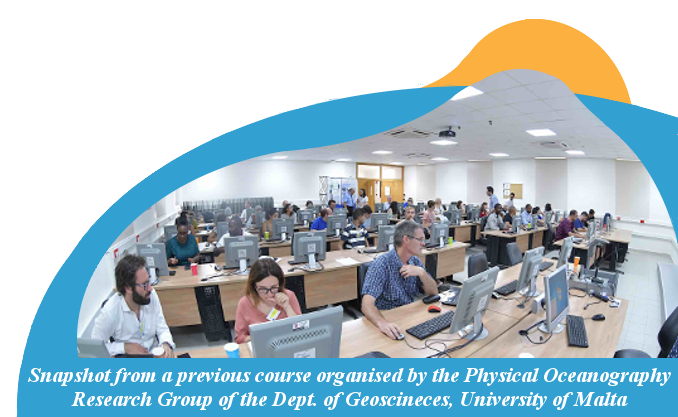
Short Course on Marine Data Literacy
An intensive preparatory course on marine data offered by the European University of the SeasSTARTING 18th OCTOBER 2021
TIMETABLE
Inauguration Event
Friday, 15th October 2021 at 1:00pm CESTProgramme
All times are in Central European Summer Time (CEST)| 1:00pm |
Introduction to the Marine Data Literacy Course
(Aldo Drago, Aleksandra Dudkowska, Sally Close, Ralph Schneider, Alfredo Izquierdo Gonzalez, Jadranka Šepić) |
| 1:15pm |
Interventions from the SEA-EU partner universities
|
| 1:40pm |
Interventions from the course Faculty
|
| 1:50pm |
Interventions from the students
|
| 2:00pm | Closure |
Schedule for the 10 intro lectures
| Lecture 1 | Monday 18th October 2021 | 5:00pm-6:30pm (CEST) |
| Lecture 2 | Wednesday 20th October 2021 | 5:00pm-6:00pm (CEST) |
| Lecture 3 | Friday 22nd October 2021 | 5:00pm-6:00pm (CEST) |
| Lecture 4 | Monday 25th October 2021 | 5:00pm-6:30pm (CEST) |
| Lecture 5 | Wednesday 27th October 2021 | 5:00pm-6:30pm (CEST) |
| Lecture 6 | Friday 29th October 2021 | 5:00pm-6:00pm (CEST) |
| Lecture 7 | Monday 8th November 2021 | 5:00pm-6:30pm (CET) |
| Lecture 8 | Wednesday 10th November 2021 | 5:00pm-6:30pm (CET) |
| Lecture 9 | Monday 15th November 2021 | 5:00pm-6:30pm (CET) |
| Lecture 10 | Wednesday 17th November 2021 | 5:00pm-6:30pm (CET) |
| Intro to practical sessions | Friday 19th November 2021 | 5:00pm-6:30pm (CET) |
Schedule for 8 practicals
All times are in Central European Time (CET)| Practical session 1 | Tuesday 23rd November 2021 | 4:00pm-7:00pm |
| Practical session 2 | Friday 26th November 2021 | 4:00pm-7:00pm |
| Practical session 3 | Wednesday 1st December 2021 | 4:00pm-7:00pm |
| Practical session 4 | Friday 3rd December 2021 | 4:00pm-7:00pm |
| Practical session 5 | Tuesday 7th December 2021 | 4:00pm-7:00pm |
| Practical session 6 | Friday 10th December 2021 | 4:00pm-7:00pm |
| Practical session 7 | Monday 13th December 2021 | 4:00pm-7:00pm |
| Practical session 8 | Wednesday 15th December 2021 | 4:00pm-7:00pm |
Project Mode Launch
Wednesday, 16th February 2022 at 4:00pm CETProgramme
All times are in Central European Summer Time (CEST)| 4:00pm |
Introduction to the Project Mode
Aleksandra Dudkowska (BoS member, Institute of Oceanography, University of Gdansk, Poland) |
Project proposal presentations |
|
| 4:15pm |
Project 1Exploiting gridded altimetry products in the Mediterranean Sea: from daily to monthly and seasonal time-scalesMentors
|
| 4:30pm |
Project 2Assessment of cloudiness for use in environmental marine researchMentors
|
| 4:45pm |
Project 3Extracting characteristic patterns of marine variables using machine learningMentors
|
| 5:00pm |
Project 4Analysis of spatial and temporal wave energy flux variability along the southern coast of Europe and northern AfricaMentors
|
| 5:15pm | Questions |
| 6:00pm | Closure |
Project Mode Final Session
Thursday, 5th May 2022 at 5:00pm CESTJoin event
INTRODUCTORY LECTURES PROGRAMME

| Session | University | Title | Duration | Key points of the lecture | Resources |
|
Lecture 1 18th October 2021 |
University of Malta Aldo Drago |
Introduction to Marine Data | 1.5 hrs |
|
Quiz answers |
|
Lecture 2 20th October 2021 |
University of Cadiz Alfredo Izquierdo |
Reliable oceanographic data sources: Met-ocean data sets: climate, reanalysis, forecast and in situ data | 1 hr |
|
Quiz answers |
|
Lecture 3 22nd October 2021 |
IODE / EMODnet
Peter Pissierssens Jelle Rondelez Pier-Luigi Buttigieg Jan-Bart Calewaert |
Concepts of Ocean Data Management | 1 hr |
|
Quiz answers |
|
Lecture 4 25th October 2021 |
University of Malta Adam Gauci |
Online Data Portals | 1.5 hrs |
|
Quiz answers |
|
Lecture 5 27th October 2021 |
Université de Bretagne Occidentale Sally Close |
Accessing and transforming data | 1.5 hrs |
|
Quiz answers |
|
Lecture 6 29th October 2021 |
University of Cadiz Jesús Gómez-Enri |
Reliable oceanographic data sources: Ocean Remote Sensing: Data source, downloading and software (SNAP) | 1 hr |
|
Quiz answers |
|
Lecture 7 8th November 2021 |
University of Malta Joel Azzopardi |
Applying AI to Oceanography | 1.5 hrs |
|
Quiz answers |
|
Lecture 8 10th November 2021 |
CAU Kiel Peer Kröger |
Managing and Processing (Big) Scientific Data | 1.5 hrs |
Managing (Big) Scientific Data
|
Quiz answers |
|
Lecture 9 15th November 2021 |
University of Split Hrvoje Kalinić |
Introduction to learning algorithms, neural networks and clustering | 1.5 hrs |
|
Quiz answers |
|
Lecture 10 17th November 2021 |
University of Gdansk Aleksandra Dudkowska |
Applying AI to Oceanography: case studies | 1.5 hrs | Case studies and demonstration of the different AI/ML models used in Oceanography | Quiz answers |
PROGRAMME FOR PRACTICALS

| Session | University | Title | Duration | Highlights on Practical | Resources | ||||||||
|
Practical Intro 19th November 2021 |
Course Faculty | Introduction to practical sessions | 1.5 hrs |
|
|||||||||
|
Practical 1 23rd November 2021 |
University of Malta Adam Gauci & Aldo Drago |
1. Model and satellite CMEMS Sea Surface Temperature data | 3 hrs |
The Copernicus Marine Environment Monitoring Service
(CMEMS) is an EU information service based on satellite
earth observation and in-situ data. CMEMS provides
state-of-the-art analyses and forecasts of oceanographic
parameters which offer an unprecedented capability to
observe, understand, and anticipate marine environment
events. CMEMS offers unique access to oceanographic
products through an online catalogue. In this project
the students will be shown how to:
|
|||||||||
|
Practical 2 26th November 2021 |
University of Split Frano Matić & Jadranka Šepić |
2. Sea-level time series: detecting processes, stationarity and trends | 3 hrs |
Students will learn how to detect stationarity and trends in
oceanographic time series. The analysis will be focused on
sea-level time series.
|
|||||||||
|
Practical 3 1st December 2021 |
Université de Bretagne Occidentale Sally Close |
3. From in situ observations to gridded data | 3 hrs |
Practical session to enable students manipulate in
situ observations and transform the input data into
a gridded product. Through this practical, they will
also discover how data availability affects the
accuracy of the gridded output, and see how this
problem can: (1) particularly affect certain undersampled
regions of the ocean, and (2) limit the time scales
that can reasonably be resolved.
Argo data will be used as an example. The students will aim to create weekly, monthly, annual and multiannual gridded products of temperature / salinity for different regions of the ocean with varying levels of data coverage. A set of instructions will be provided so that the students can achieve their objective using a “no-programming” option: students who do not have any experience in programming can complete the practical by firstly using the Coriolis web interface to select and download the data, and then by using Ocean Data View to visualise and transform the data |
|||||||||
|
Practical 4 3rd December 2021 |
University of Gdansk Aleksandra Cupiał, Wojciech Brodziński & Gabriela Gic-Grusza |
4. From data formats to practical use of water column depth data | 3 hrs |
This session will include two sub-sessions.
Firstly, students will learn how to manipulate different data formats (txt, geoTiff, NCDF). During this task, emphasis will be put on the importance of selecting subsets of data (both in temporal and spatial scale) and its influence on final analysis. Secondly, students will learn the basic aspects of spatial data interpolation and discover how different methods of interpolation impact on data accuracy of the gridded output. In this part, water column depth data will be used and some aspects of the modelling of bottom topography will be emphasized. Sets of instructions will be provided so that the students can achieve the same objective using Jupyter Notebook / Python programming. |
|||||||||
|
Practical 5 7th December 2021 |
|
||||||||||||
|
Practical 6 10th December 2021 |
University of Cadiz Jesús Gómez-Enri |
6. Oil Spill Detection from space with SENTINEL-1 | 3 hrs | Major oil spills from sinking super-tankers, or other marine accidents like the Deepwater Horizon (DWH) oil rig explosion and collapse, are thankfully very rare these days. However, smaller oil spills from shipping are unfortunately still common. Most ships have some type of fuel on board and if they are involved in an accident, there is a risk of that fuel leaking into the sea. More worryingly, some ships still deliberately release oil into the sea. In some areas even reaching the oil can be as hard as cleaning it up. Mud flats, swamps, marsh-lands and deltas can be particularly difficult. | |||||||||
|
Practical 7 13th December 2021 |
University of Split Žarko Kovač |
7. Primary production time series analysis and model parameter estimation | 3 hrs |
|
|||||||||
|
Practical 8 15th December 2021 |
|
||||||||||||
